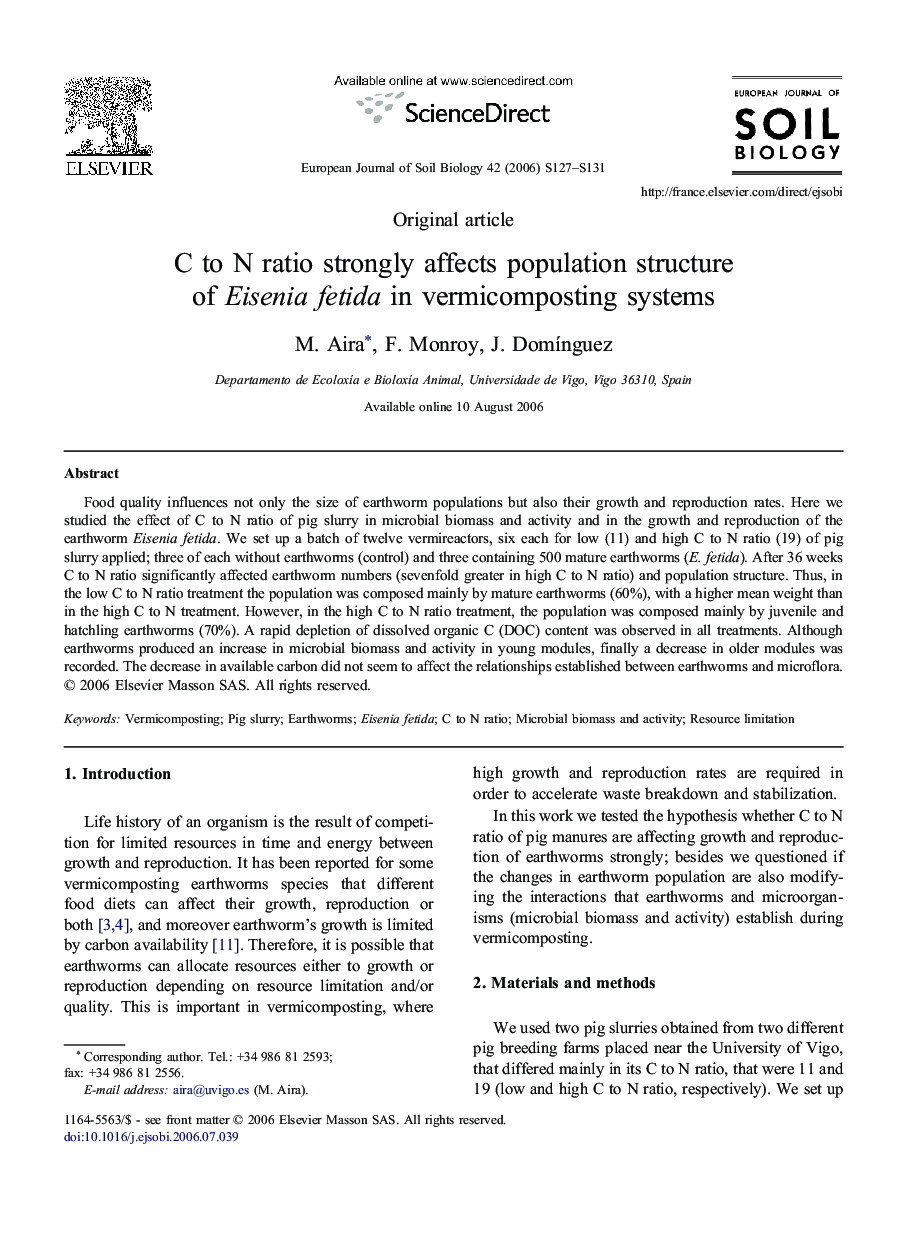| Article ID | Journal | Published Year | Pages | File Type |
|---|---|---|---|---|
| 4392602 | European Journal of Soil Biology | 2006 | 5 Pages |
Abstract
Food quality influences not only the size of earthworm populations but also their growth and reproduction rates. Here we studied the effect of C to N ratio of pig slurry in microbial biomass and activity and in the growth and reproduction of the earthworm Eisenia fetida. We set up a batch of twelve vermireactors, six each for low (11) and high C to N ratio (19) of pig slurry applied; three of each without earthworms (control) and three containing 500 mature earthworms (E. fetida). After 36 weeks C to N ratio significantly affected earthworm numbers (sevenfold greater in high C to N ratio) and population structure. Thus, in the low C to N ratio treatment the population was composed mainly by mature earthworms (60%), with a higher mean weight than in the high C to N treatment. However, in the high C to N ratio treatment, the population was composed mainly by juvenile and hatchling earthworms (70%). A rapid depletion of dissolved organic C (DOC) content was observed in all treatments. Although earthworms produced an increase in microbial biomass and activity in young modules, finally a decrease in older modules was recorded. The decrease in available carbon did not seem to affect the relationships established between earthworms and microflora.
Related Topics
Life Sciences
Agricultural and Biological Sciences
Soil Science
Authors
M. Aira, F. Monroy, J. DomÃnguez,
